Power Generation via Small Length Scale Thermo-Mechanical Systems: Current Status and Challenges, a Review
Abstract
:1. Introduction
2. Common Scaling Related Challenges
2.1. Incomplete Combustion
2.2. Leakage Loss
2.3. Friction Loss
2.4. Heat Loss
3. Power Generation: Small Length Scale Thermo-Mechanical Systems
3.1. Free Piston Devices: Engines and Expanders
3.1.1. Free Piston Architecture: Challenges, Opportunities, and Approaches
3.1.2. Combustion-Based FPE Devices: Engines
3.1.3. External Heat Based FPE Devices: Expanders
3.2. Traditional Small-Scale Organic Rankine Cycle Systems
3.3. Other Small Length Scale Heat Engines
3.3.1. Heat Engines with Compliant Cylinder or Cavity
3.3.2. Liquid-Piston Heat Engine
3.3.3. Bimetallic Strip Heat Engines
3.3.4. Thermoacoustic and Thermofluidic Engines
4. Summary of Devices
5. Concluding Remarks
Author Contributions
Funding
Acknowledgments
Conflicts of Interest
Abbreviations
| HCCI | Homogeneous Charge Compression Ignition |
| TDC | Top Dead Center |
| FPE | Free Piston Engine/Expander |
| SI | Spark Ignition |
| CI | Compression Ignition |
| CE | Conventional Engine |
| MEMS | Micro-electro-mechanical Systems |
| ORC | Organic Rankine Cycle |
| FPE–LG | Free Piston Engine–Linear Generator |
| IC | Internal Combustion |
| RC | Radio Controlled |
References
- Dunn-Rankin, D.; Leal, E.M.; Walther, D.C. Personal power systems. Prog. Energy Combust. Sci. 2005, 31, 422–465. [Google Scholar] [CrossRef]
- Annen, K.; Stickler, D.; Woodroffe, J. Linearly-Oscillating Miniature Internal Combustion Engine (MICE) for Portable Electric Power. In Proceedings of the Aerospace Sciences Meetings, Reno, NV, USA, 6–9 January 2003; American Institute of Aeronautics and Astronautics: Reno, NV, USA, 2003. [Google Scholar]
- Jacobson, S.A.; Epstein, A.H. An Informal Survey of Power Mems. In Proceedings of the International Symposium on Micro-Mechanical Engineering, Tsuchiura, Japan, 1–3 December 2003. [Google Scholar]
- Walther, D.C.; Ahn, J. Advances and challenges in the development of power-generation systems at small scales. Prog. Energy Combust. Sci. 2011, 37, 583–610. [Google Scholar] [CrossRef]
- Suzuki, Y.; Okada, Y.; Ogawa, J.; Sugiyama, S.; Toriyama, T. Experimental study on mechanical power generation from MEMS internal combustion engine. Sens. Actuators A Phys. 2008, 141, 654–661. [Google Scholar] [CrossRef]
- Burugupally, S.P. Development of a Small Scale Resonant Engine for Micro and Mesoscale Applications. Ph.D. Thesis, Washington State University, Pullman, WA, USA, 2014. [Google Scholar]
- Schaevitz, S.B.; Franz, A.J.; Jensen, K.F.; Schmidt, M.A. A Combustion-Based MEMS Thermoelectric Power Generator. In Transducers ’01 Eurosensors XV; Springer: Berlin/Heidelberg, Germany, 2001; pp. 30–33. [Google Scholar]
- Epstein, A.H.; Jacobson, S.A.; Protz, J.M.; Frechette, L.G. Shirtbutton-sized Gas Turbines: The Engineering Challenges of Micro High Speed Rotating Machinery. In Proceedings of the 8th Int’l Symposium on Transport Phenomena and Dynamics of Rotating Machinery (ISROMAC-08), Honolulu, HI, USA, 26–30 March 2000. [Google Scholar]
- Whalen, S.; Thompson, M.; Bahr, D.; Richards, C.; Richards, R. Design, fabrication and testing of the P3 micro heat engine. Sens. Actuators A Phys. 2003, 104, 290–298. [Google Scholar] [CrossRef]
- Preetham, B.; Weiss, L. Investigations of a new free piston expander engine cycle. Energy 2016, 106, 535–545. [Google Scholar] [CrossRef] [Green Version]
- Fu, K.; Knobloch, A.; Martinez, F.; Walter, D.; Fernandez-Pello, C.; Pisano, A.; Liepmann, D. Design and fabrication of a silicon-based MEMS rotary engine. In Proceedings of the 2001 ASME International Mechanical Engineering Congress and Exposition, New York, NY, USA, 11–16 November 2001; pp. 295–302. [Google Scholar]
- Li, G.; Zhang, H.; Yang, F.; Song, S.; Chang, Y.; Yu, F.; Wang, J.; Yao, B. Preliminary Development of a Free Piston Expander–Linear Generator for Small-Scale Organic Rankine Cycle (ORC) Waste Heat Recovery System. Energies 2016, 9, 300. [Google Scholar] [CrossRef]
- Champagne, C.; Weiss, L. Performance Analysis of a Miniature Free Piston Expander for Waste Heat Energy Harvesting. Energy Convers. Manag. 2013, 76, 883–892. [Google Scholar] [CrossRef]
- Gould, C.; Shammas, N.; Granger, S.; Taylor, I. A Comprehensive Review of Thermoelectric Technology, Micro-electrical and Power Generation Properties. In Proceedings of the 26th International Conference on Microelectronics, Nis, Serbia, 11–14 May 2008; pp. 329–332. [Google Scholar]
- Karvonen, M.; Kapoor, R.; Uusitalo, A.; Ojanen, V. Technology competition in the internal combustion engine waste heat recovery: A patent landscape analysis. J. Clean. Prod. 2016, 112, 3735–3743. [Google Scholar] [CrossRef]
- Sudharshan, K.; Kumar, V.P.; Barshilia, H.C. Performance evaluation of a thermally concentrated solar thermo-electric generator without optical concentration. Sol. Energy Mater. Sol. Cells 2016, 157, 93–100. [Google Scholar] [CrossRef]
- Ogbonnaya, E.; Weiss, L. Small-Scale Flat Plate Collectors for Solar Thermal Scavenging in Low Conductivity Environments. Int. J. Photoenergy 2017, 2017, 1–10. [Google Scholar] [CrossRef]
- Kondo, T.; Mizoshiri, M.; Mikami, M.; Itou, Y.; Sakurai, J.; Hata, S. Fabrication of CuO-based antireflection structures using self-arranged submicron SiO2 spheres for thermoelectric solar generation. Jpn. J. Appl. Phys. 2016, 55, 06GP07. [Google Scholar] [CrossRef]
- Nakajima, N.; Ogawa, K.; Fujimasa, I. Study on micro engines-miniaturizing Stirling engines for actuators and heatpumps. In Proceedings of the Micro Electro Mechanical Systems, an Investigation of Micro Structures, Sensors, Actuators, Machines and Robots, Salt Lake City, UT, USA, 20–22 February 1989; pp. 145–148. [Google Scholar]
- Menon, S.; Cadou, C. Miniaturization Limits of Small IC Engines. In Proceedings of the Power MEMS 2009, Washington, DC, USA, 1–4 December 2009. [Google Scholar]
- Papac, J.; Dunn-Rankin, D. Performance assessment of a centimeter scale four-stroke engine. In Proceedings of the Western States Section of the Combustion Institute (WSSCI) Fall Meeting, Los Angeles, CA, USA, 20–21 October 2003. [Google Scholar]
- Sher, E.; Sher, I. Theoretical limits of scaling-down internal combustion engines. Chem. Eng. Sci. 2011, 66, 260–267. [Google Scholar] [CrossRef] [Green Version]
- Aichlmayr, H.; Kittelson, D.; Zachariah, M. Miniature free-piston homogeneous charge compression ignition engine-compressor concept—Part 1: Performance estimation and design considerations unique to small dimensions. Chem. Eng. Sci. 2002, 57, 4161–4171. [Google Scholar] [CrossRef]
- Heywood, J. Internal Combustion Engine Fundamentals; McGraw-Hill Education: New York, NY, USA, 1988. [Google Scholar]
- Aichlmayr, H.; Kittelson, D.; Zachariah, M. Miniature free-piston homogeneous charge compression ignition engine-compressor concept—Part 2: Modeling HCCI combustion in small scales with detailed homogeneous gas phase chemical kinetics. Chem. Eng. Sci. 2002, 57, 4173–4186. [Google Scholar] [CrossRef]
- Sher, I.; Levinzon-Sher, D.; Sher, E. Miniaturization limitations of HCCI internal combustion engines. Appl. Therm. Eng. 2009, 29, 400–411. [Google Scholar] [CrossRef]
- Sher, E.; Levinzon, D. Scaling-Down of Miniature Internal Combustion Engines: Limitations and Challenges. Heat Transf. Eng. 2005, 26, 1–4. [Google Scholar] [CrossRef]
- Pulkrabek, W.W. Engineering Fundamentals of the Internal Combustion Engine; Pearson Prentice Hall: Upper Saddle River, NJ, USA, 2015. [Google Scholar]
- Preetham, B.S.; Anderson, M.; Richards, C. Modeling of a resonant heat engine. J. Appl. Phys. 2012, 112, 124903. [Google Scholar] [CrossRef]
- Preetham, B.S.; Anderson, M.; Richards, C. Estimation of parasitic losses in a proposed mesoscale resonant engine: Experiment and model. J. Appl. Phys. 2014, 115, 054904. [Google Scholar] [CrossRef]
- Hoshi, M. Reducing friction losses in automobile engines. Tribol. Int. 1984, 17, 185–189. [Google Scholar] [CrossRef]
- Gordon, J.M.; Huleihil, M. On optimizing maximum-power heat engines. J. Appl. Phys. 1991, 69, 1–7. [Google Scholar] [CrossRef]
- Gordon, J.M.; Huleihil, M. General performance characteristics of real heat engines. J. Appl. Phys. 1992, 72, 829–837. [Google Scholar] [CrossRef]
- Yagi, S.; Ishibasi, Y.; Sono, H. Experimental Analysis of Total Engine Friction in Four Stroke S.I. Engines; SAE Technical Paper; SAE International: Warrendale, PA, USA, 1990. [Google Scholar]
- Fujii, I.; Yagi, S.; Sono, H.; Kamiya, H. Total Engine Friction in Four Stroke S.I. Motorcycle Engine; SAE Technical Paper; SAE International: Warrendale, PA, USA, 1988. [Google Scholar]
- Wakuri, Y.; Hamatake, T.; Soejima, M.; Kitahara, T. Piston ring friction in internal combustion engines. Tribol. Int. 1992, 25, 299–308. [Google Scholar] [CrossRef]
- Preetham, B.S.; Anderson, M.; Richards, C. Mathematical modeling of a four-stroke resonant engine for micro and mesoscale applications. J. Appl. Phys. 2014, 116, 214904. [Google Scholar] [CrossRef]
- Franco, A.; Martorano, L. Evaluations on the Heat Transfer in the Small Two-Stroke Engines; SAE Technical Paper; SAE International: Warrendale, PA, USA, 1998. [Google Scholar]
- Formosa, F.; Fréchette, L.G. Scaling laws for free piston Stirling engine design: Benefits and challenges of miniaturization. Energy 2013, 57, 796–808. [Google Scholar] [CrossRef]
- Xu, J.; Yuan, C.; He, Y.; Wang, R. An optimization of free-piston engine generator combustion using variable piston motion. Adv. Mech. Eng. 2017, 9. [Google Scholar] [CrossRef]
- Mikalsen, R.; Roskilly, A. A review of free-piston engine history and applications. Appl. Therm. Eng. 2007, 27, 2339–2352. [Google Scholar] [CrossRef] [Green Version]
- Achten, P. A Review of Free Piston Engine Concepts. Trans. SAE 1994, 103, 1836–1847. [Google Scholar]
- Aichlmayr, H.T.; Kittelson, D.B.; Zachariah, M.R. Micro-HCCI combustion: Experimental characterization and development of a detailed chemical kinetic model with coupled piston motion. Combust. Flame 2003, 135, 227–248. [Google Scholar] [CrossRef]
- Bai, J.; Wang, Q.; He, Z.; Li, C.; Pan, J. Study on methane HCCI combustion process of micro free-piston power device. Appl. Therm. Eng. 2014, 73, 1066–1075. [Google Scholar] [CrossRef]
- Wang, Q.; Zhang, D.; Bai, J.; He, Z. Numerical simulation of catalysis combustion inside micro free-piston engine. Energy Convers. Manag. 2016, 113, 243–251. [Google Scholar] [CrossRef]
- Wang, Q.; Yang, J.H.; Bai, J.; Chen, J.J.; Chen, Z. Research of Micro Free-Piston Engine Generator Performance. Adv. Mater. Res. 2011, 199, 198–202. [Google Scholar] [CrossRef]
- Miao, Y.; Zuo, Z.; Feng, H.; Guo, C.; Song, Y.; Jia, B.; Guo, Y. Research on the Combustion Characteristics of a Free-Piston Gasoline Engine Linear Generator during the Stable Generating Process. Energies 2016, 9, 655. [Google Scholar] [CrossRef]
- Jia, B.; Zuo, Z.; Smallbone, A.; Feng, H.; Roskilly, A.P. A Decoupled Design Parameter Analysis for Free-Piston Engine Generators. Energies 2017, 10, 486. [Google Scholar] [CrossRef]
- Imran, M.; Haglind, F.; Asim, M.; Alvi, J.Z. Recent research trends in organic Rankine cycle technology: A bibliometric approach. Renew. Sustain. Energy Rev. 2018, 81, 552–562. [Google Scholar] [CrossRef]
- Delgado-Torres, A.M.; García-Rodríguez, L. Analysis and optimization of the low-temperature solar organic Rankine cycle (ORC). Energy Convers. Manag. 2010, 51, 2846–2856. [Google Scholar] [CrossRef]
- Tian, Y.; Zhang, H.; Li, G.; Hou, X.; Yu, F.; Yang, F.; Yang, Y.; Liu, Y. Experimental study on free piston linear generator (FPLG) used for waste heat recovery of vehicle engine. Appl. Therm. Eng. 2017, 127, 184–193. [Google Scholar] [CrossRef]
- Thapa, S.; Borquist, E.; Baniya, A.; Weiss, L. Experimental and Computational Investigation of a MEMS-Based Boiler for Waste Heat Recovery. Energy Convers. Manag. 2015, 100, 403–413. [Google Scholar] [CrossRef]
- Thapa, S.; Borquist, E.; Weiss, L. Thermal Energy Recovery via Integrated Small Scale Boiler and Superheater. Energy 2018, 142, 765–772. [Google Scholar] [CrossRef]
- Borquist, E.; Thapa, S.; Weiss, L. Experimental and lattice Boltzmann simulated operation of a copper micro-channel heat exchanger. Energy Convers. Manag. 2016, 117, 171–184. [Google Scholar] [CrossRef] [Green Version]
- Hou, X.; Zhang, H.; Yu, F.; Liu, H.; Yang, F.; Xu, Y.; Tian, Y.; Li, G. Free piston expander-linear generator used for organic Rankine cycle waste heat recovery system. Appl. Energy 2017, 208, 1297–1307. [Google Scholar] [CrossRef]
- Sprouse, C., III; Depcik, C. Review of organic Rankine cycles for internal combustion engine exhaust waste heat recovery. Appl. Therm. Eng. 2013, 51, 711–722. [Google Scholar] [CrossRef]
- White, M.T.; Sayma, A.I. A Generalised Assessment of Working Fluids and Radial Turbines for Non-Recuperated Subcritical Organic Rankine Cycles. Energies 2018, 11, 800. [Google Scholar] [CrossRef]
- Freeman, J.; Hellgardt, K.; Markides, C.N. Working fluid selection and electrical performance optimisation of a domestic solar-ORC combined heat and power system for year-round operation in the UK. Appl. Energy 2017, 186, 291–303. [Google Scholar] [CrossRef]
- Freeman, J.; Hellgardt, K.; Markides, C.N. An assessment of solar-powered organic Rankine cycle systems for combined heating and power in UK domestic applications. Appl. Energy 2015, 138, 605–620. [Google Scholar] [CrossRef]
- Quoilin, S.; Orosz, M.; Hemond, H.; Lemort, V. Performance and design optimization of a low-cost solar organic Rankine cycle for remote power generation. Sol. Energy 2011, 85, 955–966. [Google Scholar] [CrossRef] [Green Version]
- Douvartzides, S.; Karmalis, I. Working fluid selection for the Organic Rankine Cycle (ORC) exhaust heat recovery of an internal combustion engine power plant. In IOP Conference Series: Materials Science and Engineering; IOP Publishing: Bristol, UK, 2016; Volume 161, p. 012087. [Google Scholar]
- Oyewunmi, O.A.; Markides, C.N. Thermo-Economic and Heat Transfer Optimization of Working-Fluid Mixtures in a Low-Temperature Organic Rankine Cycle System. Energies 2016, 9, 448. [Google Scholar] [CrossRef]
- Andreasen, J.; Larsen, U.; Knudsen, T.; Pierobon, L.; Haglind, F. Selection and optimization of pure and mixed working fluids for low grade heat utilization using organic Rankine cycles. Energy 2014, 73, 204–213. [Google Scholar] [CrossRef] [Green Version]
- Modi, A.; Haglind, F. A review of recent research on the use of zeotropic mixtures in power generation systems. Energy Convers. Manag. 2017, 138, 603–626. [Google Scholar] [CrossRef]
- Wang, E.; Yu, Z. A numerical analysis of a composition-adjustable Kalina cycle power plant for power generation from low-temperature geothermal sources. Appl. Energy 2016, 180, 834–848. [Google Scholar] [CrossRef]
- Singh, D.V.; Pedersen, E. A review of waste heat recovery technologies for maritime applications. Energy Convers. Manag. 2016, 111, 315–328. [Google Scholar] [CrossRef]
- Song, J.; Gu, C.W.; Li, X.S. Performance estimation of Tesla turbine applied in small scale Organic Rankine Cycle (ORC) system. Appl. Therm. Eng. 2017, 110, 318–326. [Google Scholar] [CrossRef]
- Peterson, R.; Wang, H.; Herron, T. Performance of a small-scale regenerative Rankine power cycle employing a scroll expander. Proc. Inst. Mech. Eng. Part A J. Power Energy 2008, 222, 271–282. [Google Scholar] [CrossRef]
- Nikolov, A.; Brümmer, A. Investigating a small oil-flooded twin-screw expander for waste-heat utilisation in organic rankine cycle systems. Energies 2017, 10, 869. [Google Scholar] [CrossRef]
- Kolasiński, P. The influence of the heat source temperature on the multivane expander output power in an organic Rankine cycle (ORC) system. Energies 2015, 8, 3351–3369. [Google Scholar] [CrossRef]
- Bao, J.; Zhao, L. A review of working fluid and expander selections for organic Rankine cycle. Renew. Sustain. Energy Rev. 2013, 24, 325–342. [Google Scholar] [CrossRef]
- Qiu, G.; Liu, H.; Riffat, S. Expanders for micro-CHP systems with organic Rankine cycle. Appl. Therm. Eng. 2011, 31, 3301–3307. [Google Scholar] [CrossRef] [Green Version]
- Badr, O.; O’Callaghan, P.; Hussein, M.; Probert, S. Multi-vane expanders as prime movers for low-grade energy organic Rankine-cycle engines. Appl. Energy 1984, 16, 129–146. [Google Scholar] [CrossRef]
- Kolasiński, P.; Błasiak, P.; Rak, J. Experimental and numerical analyses on the rotary vane expander operating conditions in a micro organic Rankine cycle system. Energies 2016, 9, 606. [Google Scholar] [CrossRef]
- Wei, D.; Lu, X.; Lu, Z.; Gu, J. Performance analysis and optimization of organic Rankine cycle (ORC) for waste heat recovery. Energy Convers. Manag. 2007, 48, 1113–1119. [Google Scholar] [CrossRef]
- Montenegro, G.; Della Torre, A.; Fiocco, M.; Onorati, A.; Benatzky, C.; Schlager, G. Evaluating the performance of a rotary vane expander for small scale organic rankine cycles using CFD tools. Energy Procedia 2014, 45, 1136–1145. [Google Scholar] [CrossRef]
- Lee, C.; Frechette, L. Experimental Development of the Rotating Subsystem for a Micro Rankine Power System. In Proceedings of the Power MEMS 2005, Tokyo, Japan, 28–30 November 2005; pp. 37–40. [Google Scholar]
- Lee, C.; Liamini, M.; Frechette, L. A Silicon Microturbopump for a Rankine-Cycle Power-Generation Microsystem Part 2: Fabrication and Characterization. J. Microelectromech. Syst. 2011, 20, 326–338. [Google Scholar] [CrossRef]
- Lee, C.; Frechette, L. A Silicon Microturbopump for a Rankine-Cycle Power Generation Microsystem Part 1: Component and System Design. J. Microelectromech. Syst. 2011, 20, 312–325. [Google Scholar] [CrossRef]
- Epstein, A.H. Millimeter-Scale, Micro-Electro-Mechanical Systems Gas Turbine Engines. J. Eng. Gas Turbines Power 2004, 126, 205–226. [Google Scholar] [CrossRef]
- Weiss, L. Power Production from Phase Change in MEMS and Micro Devices, a Review. Int. J. Therm. Sci. 2011, 50, 639–647. [Google Scholar] [CrossRef]
- Cho, J.; Weiss, L.; Bahr, D.; Richards, C.; Richards, R. Power Production by a Dynamic Micro Heat Engine with an Integrated Thermal Switch. J. Micromech. Microeng. 2007, 17, S217–S223. [Google Scholar] [CrossRef]
- Weiss, L.; Cho, J.; McNeil, K.; Bahr, D.; Richards, C.; Richards, R. Characterization of a dynamic micro heat engine with integrated thermal switch. J. Micromech. Microeng. 2006, 16, S262–S269. [Google Scholar] [CrossRef]
- Weiss, L. Resonant operation and cycle work from a MEMS-based micro-heat engine. Microsyst. Technol. 2009, 15, 485–492. [Google Scholar] [CrossRef]
- Cho, J.; Anderson, M.; Richards, R.; Bahr, D.; Richards, C. Optimization of electromechanical coupling for a thin-film PZT membrane: I. Modeling. J. Micromech. Microeng. 2005, 15, 1797–1803. [Google Scholar] [CrossRef]
- Cho, J.; Anderson, M.; Richards, R.; Bahr, D.; Richards, C. Optimization of electromechanical coupling for a thin-film PZT membrane: II. Experiment. J. Micromech. Microeng. 2005, 15, 1804–1809. [Google Scholar] [CrossRef]
- Robinson, M.; Morris, D.; Hayenga, P.; Cho, J.; Richards, C.; Richards, R.; Bahr, D. Structural and electrical characterization of PZT on gold for micromachined piezoelectric membranes. Appl. Phys. A Mater. Sci. Process. 2006, 85, 135–140. [Google Scholar] [CrossRef]
- Al-attab, K.; Zainal, Z. Low grade waste heat recovery using diethyl ether thermo-fluid diaphragm engine. Appl. Therm. Eng. 2017, 127, 944–949. [Google Scholar] [CrossRef]
- Huesgen, T.; Ruhhammer, J.; Biancuzzi, G.; Woias, P. Detailed study of a micro heat engine for thermal energy harvesting. J. Micromech. Microeng. 2010, 20, 104004. [Google Scholar] [CrossRef]
- Tessier-Poirier, A.; Monin, T.; Léveillé, E.; Formosa, F.; Monfray, S.; Fréchette, L.G. Influence of nonlinearities on the power output of the Self-Oscillating Fluidic Heat Engine (SOFHE). J. Phys. Conf. Ser. 2016, 773, 012113. [Google Scholar] [CrossRef]
- Monin, T.; Tessier-Poirier, A.; Amnache, A.; Skotnicki, T.; Monfray, S.; Formosa, F.; Fréchette, L. Demonstration of a Microfabricated Self-Oscillating Fluidic Heat Engine (SOFHE). In Proceedings of the Solid-State Sensors, Actuators and Microsystems Workshop, Hilton Head Island, SC, USA, 3–7 June 2018. [Google Scholar]
- Ravindran, S.K.T.; Kroener, M.; Shabanian, A.; Goldschmidtboeing, F.; Woias, P. Analysis of a bimetallic micro heat engine for energy harvesting. Smart Mater. Struct. 2014, 23, 035011. [Google Scholar] [CrossRef]
- Arnaud, A.; Boughaleb, J.; Monfray, S.; Boeuf, F.; Cugat, O.; Skotnicki, T. Thermo-mechanical efficiency of the bimetallic strip heat engine at the macro-scale and micro-scale. J. Micromech. Microeng. 2015, 25, 104003. [Google Scholar] [CrossRef]
- Backhaus, S.; Swift, G.W. A thermoacoustic-Stirling heat engine: Detailed study. J. Acoust. Soc. Am. 2000, 107, 3148–3166. [Google Scholar] [CrossRef] [PubMed]
- Hatori, H.; Biwa, T.; Yazaki, T. How to build a loaded thermoacoustic engine. J. Appl. Phys. 2012, 111, 074905. [Google Scholar] [CrossRef]
- Zink, F.; Vipperman, J.; Schaefer, L. CFD simulation of a thermoacoustic engine with coiled resonator. Int. Commun. Heat Mass Transf. 2010, 37, 226–229. [Google Scholar] [CrossRef]
- Mohd Saat, F.A.; Jaworski, A.J. Friction Factor Correlation for Regenerator Working in a Travelling-Wave Thermoacoustic System. Appl. Sci. 2017, 7, 253. [Google Scholar] [CrossRef]
- Hong, B.S.; Lin, T.Y. System identification and resonant control of thermoacoustic engines for robust solar power. Energies 2015, 8, 4138–4159. [Google Scholar] [CrossRef]
- Piccolo, A. Study of Standing-Wave Thermoacoustic Electricity Generators for Low-Power Applications. Appl. Sci. 2018, 8, 287. [Google Scholar] [CrossRef]
- Wu, F.; Wu, C.; Guo, F.; Li, Q.; Chen, L. Optimization of a thermoacoustic engine with a complex heat transfer exponent. Entropy 2003, 5, 444–451. [Google Scholar] [CrossRef]
- Jin, T.; Huang, J.; Feng, Y.; Yang, R.; Tang, K.; Radebaugh, R. Thermoacoustic prime movers and refrigerators: Thermally powered engines without moving components. Energy 2015, 93, 828–853. [Google Scholar] [CrossRef]
- Hu, Z.J.; Li, Z.Y.; Li, Q.; Li, Q. Evaluation of thermal efficiency and energy conversion of thermoacoustic Stirling engines. Energy Convers. Manag. 2010, 51, 802–812. [Google Scholar] [CrossRef]
- Abduljalil, A.S.; Yu, Z.; Jaworski, A.J. Selection and experimental evaluation of low-cost porous materials for regenerator applications in thermoacoustic engines. Mater. Des. 2011, 32, 217–228. [Google Scholar] [CrossRef] [Green Version]
- Mohd Saat, F.A.; Jaworski, A.J. The effect of temperature field on low amplitude oscillatory flow within a parallel-plate heat exchanger in a standing wave thermoacoustic system. Appl. Sci. 2017, 7, 417. [Google Scholar] [CrossRef]
- Biwa, T.; Hasegawa, D.; Yazaki, T. Low temperature differential thermoacoustic Stirling engine. App. Phys. Lett. 2010, 97, 034102. [Google Scholar] [CrossRef]
- Markides, C.N.; Smith, T.C. A dynamic model for the efficiency optimization of an oscillatory low grade heat engine. Energy 2011, 36, 6967–6980. [Google Scholar] [CrossRef] [Green Version]
- Wang, K.; Sanders, S.R.; Dubey, S.; Choo, F.H.; Duan, F. Stirling cycle engines for recovering low and moderate temperature heat: A review. Renew. Sustain. Energy Rev. 2016, 62, 89–108. [Google Scholar] [CrossRef]
- Smith, T. Power dense thermofluidic oscillators for high load applications. In Proceedings of the 2nd International Energy Conversion Engineering Conference, Providence, RI, USA, 16–19 August 2004; p. 5758. [Google Scholar]
- Kirmse, C.J.; Oyewunmi, O.A.; Haslam, A.J.; Markides, C.N. Comparison of a novel organic-fluid thermofluidic heat converter and an organic Rankine cycle heat engine. Energies 2016, 9, 479. [Google Scholar] [CrossRef]
- Markides, C.N.; Solanki, R.; Galindo, A. Working fluid selection for a two-phase thermofluidic oscillator: Effect of thermodynamic properties. Appl. Energy 2014, 124, 167–185. [Google Scholar] [CrossRef]
- Kirmse, C.J.; Oyewunmi, O.A.; Taleb, A.I.; Haslam, A.J.; Markides, C.N. A two-phase single-reciprocating-piston heat conversion engine: Non-linear dynamic modelling. Appl. Energy 2017, 186, 359–375. [Google Scholar] [CrossRef]
- Solanki, R.; Mathie, R.; Galindo, A.; Markides, C.N. Modelling of a two-phase thermofluidic oscillator for low-grade heat utilisation: Accounting for irreversible thermal losses. Appl. Energy 2013, 106, 337–354. [Google Scholar] [CrossRef]
- Taleb, A.I.; Timmer, M.A.; El-Shazly, M.Y.; Samoilov, A.; Kirillov, V.A.; Markides, C.N. A single-reciprocating-piston two-phase thermofluidic prime-mover. Energy 2016, 104, 250–265. [Google Scholar] [CrossRef]
- Palanisamy, K.; Taleb, A.I.; Markides, C.N. Optimizing the Non-Inertive-Feedback Thermofluidic Engine for the conversion of low-grade heat to pumping work. Heat Transf. Eng. 2015, 36, 1303–1320. [Google Scholar] [CrossRef]
- Menon, S.; Cadou, C.P. Scaling of Miniature Piston Engine Performance Part?2: Energy Losses. J. Propuls. Power 2013, 29, 788–799. [Google Scholar] [CrossRef]
- Dahm, W.; Ni, J.; Mijit, K.; Mayor, R.; Qiao, G.; Benjamin, A.; Gu, Y.; Lei, Y.; Papke, M. Micro internal combustion swing engine (MICSE) for portable power generation systems. In Proceedings of the 40th AIAA Aerospace Sciences Meeting and Exhibit, Reno, NV, USA, 14–17 January 2002. [Google Scholar]
- Wang, K.; Sun, D.; Zhang, J.; Xu, Y.; Zou, J.; Wu, K.; Qiu, L.; Huang, Z. Operating characteristics and performance improvements of a 500 W traveling-wave thermoacoustic electric generator. Appl. Energy 2015, 160, 853–862. [Google Scholar] [CrossRef]

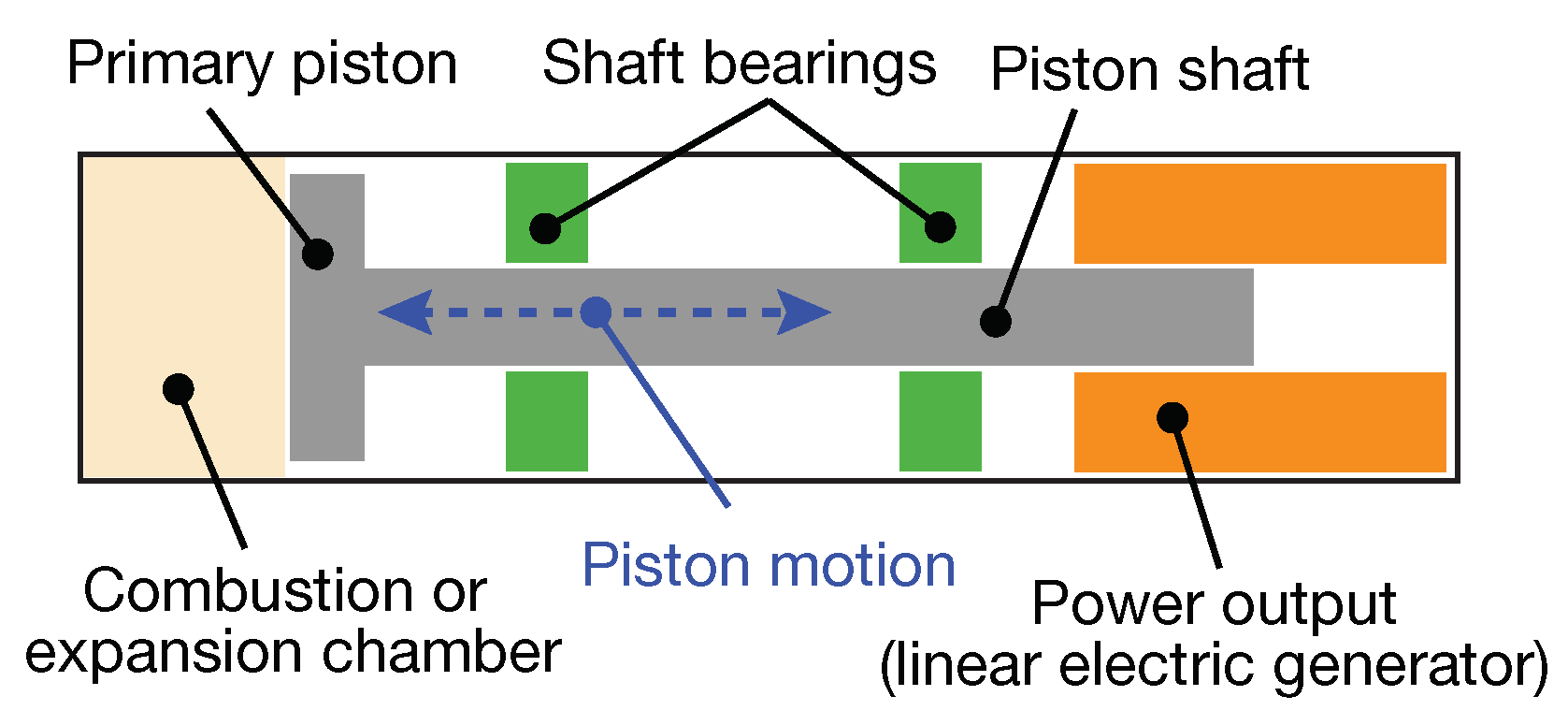

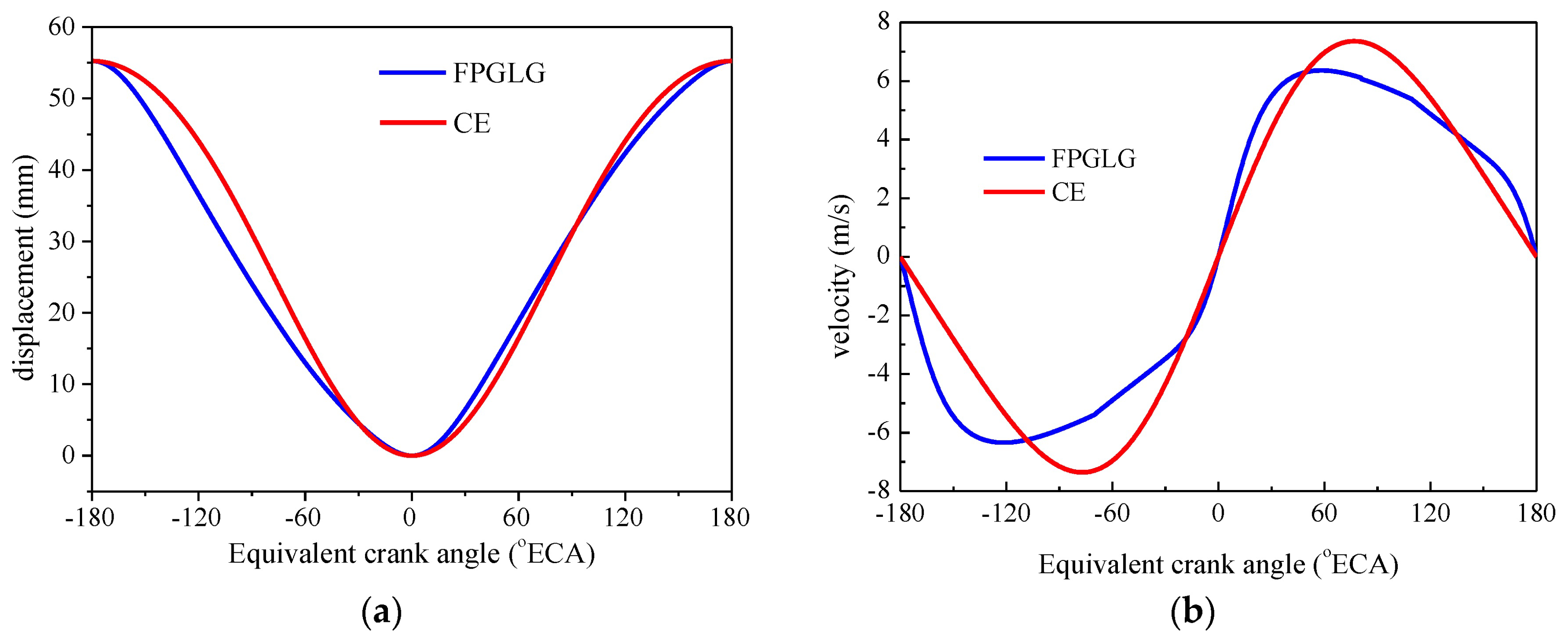
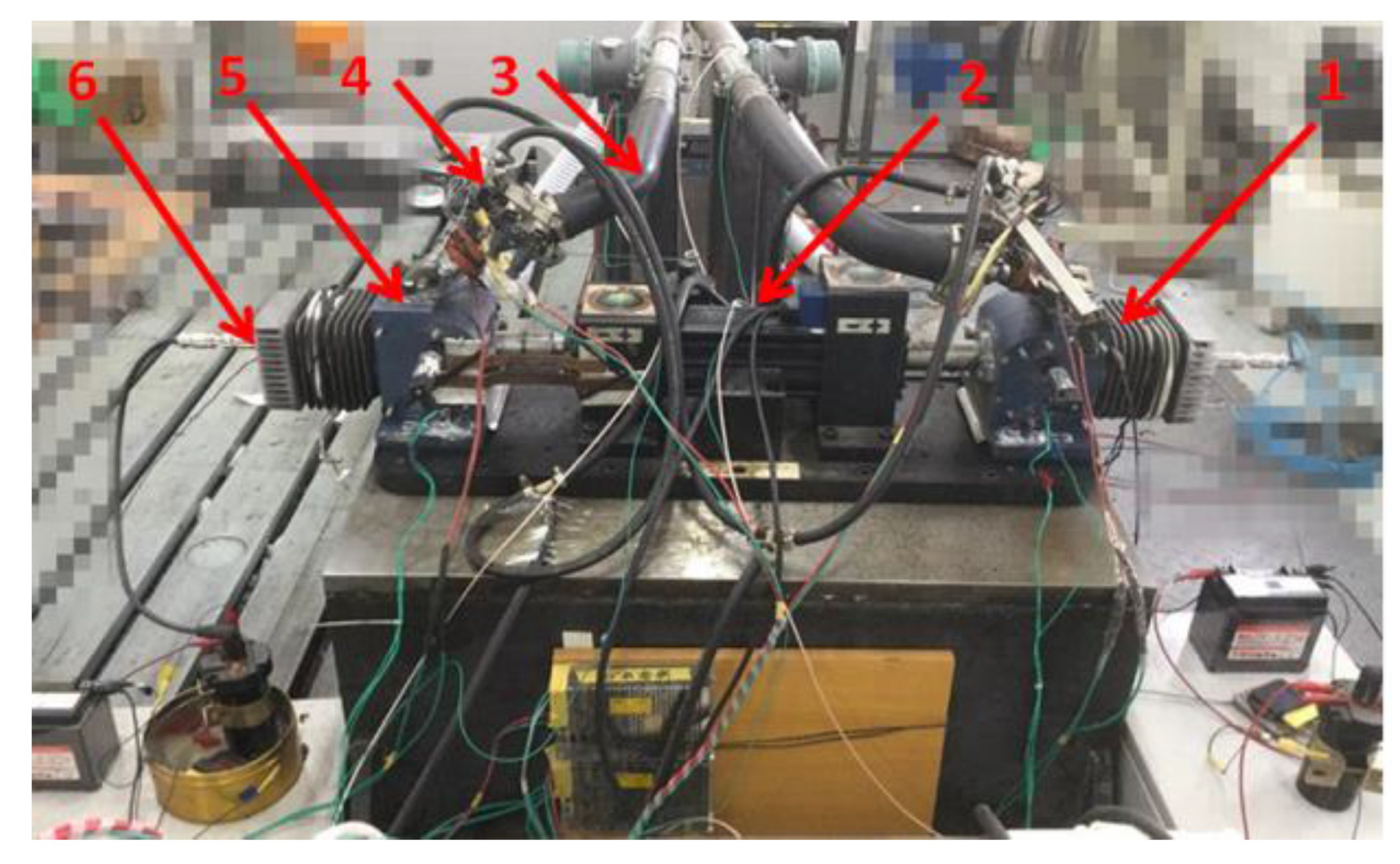




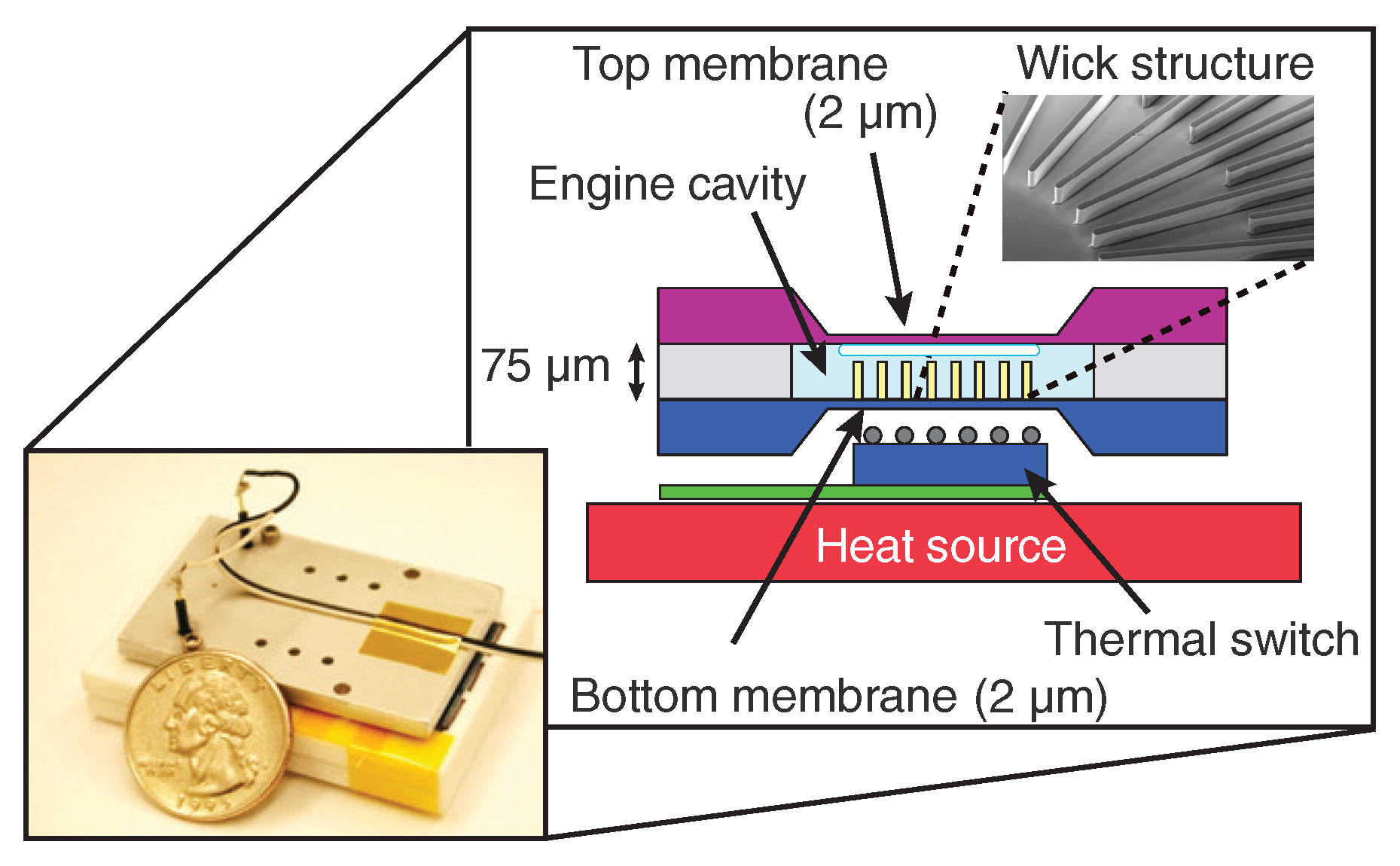

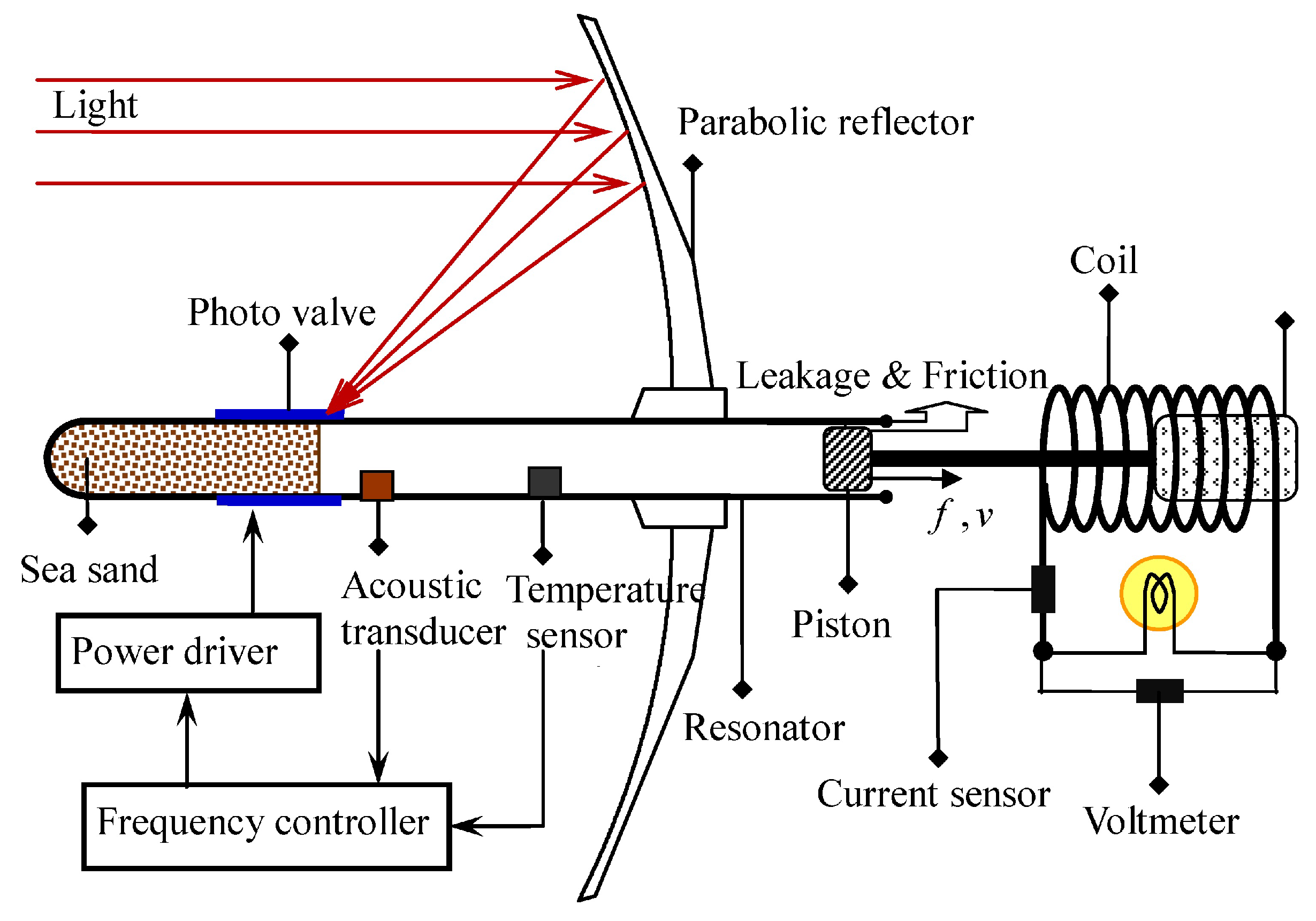
| Technology | Class | Device Specifications (Size, Fuel/Working Fluid, Thermal Efficiency ) | Challenge(s) | Application |
|---|---|---|---|---|
| MEMS IC engine [5] | C | 0.015 cc Premixed H2 + O2 – | Leakage loss | Micro propulsion |
| Two-stroke piston engine [115] | C | 0.5–1 cc Glow fuel 3–12% | Incomplete combustion | Micro-unmanned aerial vehicle (UAV) |
| MICSE [116] | C | 4 cc Butane vapor 22% | Leakage, friction, and heat losses | Portable power |
| Mesoscale compliant engine [37] | C | 21 cc Gasoline 45% (theoretical) | Super compliant structures | Micro propulsion |
| MEMS P3 heat engine [9,82] | E | 0.0006 cc 3MTM PF-5060DL 0.1% | Heat loss | Portable power |
| Miniature free piston expander [13] | E | 0.03 cc HFE 7200 – | Piston sealing and friction loss | Low temperature waste heat scavenging |
| Thermo- fluidic [110,111] | E | 0.06 cc Organic Fluids 15% theoretical, 0.2% experiment | Heat Exchanger Efficiency, Internal Flow Efficiency | Waste heat recovery & Combined Heat Power |
| Small vane expander [74] | E | 2.0 cc R123 17.2% | Tip sealing, leakage loss | Waste heat recovery |
| Small scroll expander [68] | E | 54.8 cc R123 7.2% | Leakage loss | Waste heat recovery for auxiliary power |
| FPE-LG [12] | E | 502 cc Organic fluids 66% | Working fluid flow control | Waste heat recovery from vehicles |
| Small ORC scroll expander [60] | E | 180.7 cc Organic Fluids 7–8% overall | Leakage loss Cost | Off-grid power generation |
| Thermo- acoustic [117] | E | 90 mm diameter Air 14.5% thermal to electric | Regenerator Efficiency | Waste heat recovery/solar |
© 2018 by the authors. Licensee MDPI, Basel, Switzerland. This article is an open access article distributed under the terms and conditions of the Creative Commons Attribution (CC BY) license (http://creativecommons.org/licenses/by/4.0/).
Share and Cite
Burugupally, S.P.; Weiss, L. Power Generation via Small Length Scale Thermo-Mechanical Systems: Current Status and Challenges, a Review. Energies 2018, 11, 2253. https://doi.org/10.3390/en11092253
Burugupally SP, Weiss L. Power Generation via Small Length Scale Thermo-Mechanical Systems: Current Status and Challenges, a Review. Energies. 2018; 11(9):2253. https://doi.org/10.3390/en11092253
Chicago/Turabian StyleBurugupally, Sindhu Preetham, and Leland Weiss. 2018. "Power Generation via Small Length Scale Thermo-Mechanical Systems: Current Status and Challenges, a Review" Energies 11, no. 9: 2253. https://doi.org/10.3390/en11092253





